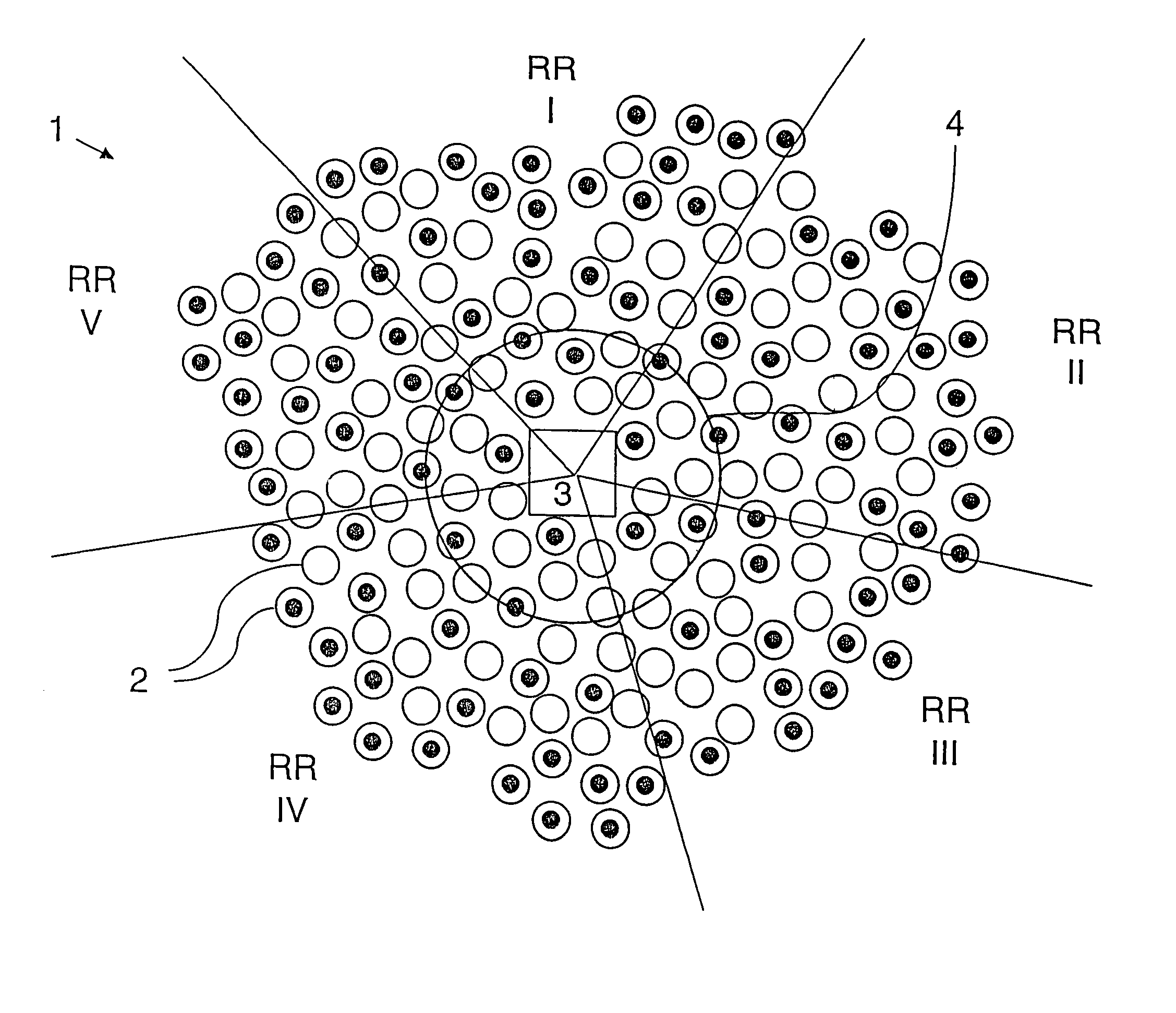Method for distributing keys for encrypted data transmission in a preferably wireless sensor network
a wireless sensor and encryption technology, applied in the direction of digital transmission, network topologies, securing communication, etc., can solve the problems of loosening the level of security and unusability of known methods
- Summary
- Abstract
- Description
- Claims
- Application Information
AI Technical Summary
Benefits of technology
Problems solved by technology
Method used
Image
Examples
Embodiment Construction
[0041]FIG. 1 shows schematically a sensor network 1 which comprises a multitude of sensor nodes 2. The sensor network 1 comprises additionally a sink node 3 which is located preferably in the centre of the sensor network 1 where the data of the individual sensor nodes 2 is received. It's assumed that the sensor nodes 2 and the sink node 3 do not move in a given topological region after deployment has taken place but stay statically in their positions.
[0042]Before the deployment of the sensor nodes 2 and sink node 3, a subset K* of keys k from the set K of potential keys k is stored in the single sensor nodes 2, wherein the subset K* is chosen identically for all sensor nodes 2 of the sensor network 1.
[0043]Directly after the sensor nodes 2 have been deployed, the sink node 3 sends a request message. This message is received by all sensor nodes 2 which are located within the transmission range of the sink node 3. The transmission range of sink node 3 is indicated schematically in the...
PUM
 Login to View More
Login to View More Abstract
Description
Claims
Application Information
 Login to View More
Login to View More - R&D
- Intellectual Property
- Life Sciences
- Materials
- Tech Scout
- Unparalleled Data Quality
- Higher Quality Content
- 60% Fewer Hallucinations
Browse by: Latest US Patents, China's latest patents, Technical Efficacy Thesaurus, Application Domain, Technology Topic, Popular Technical Reports.
© 2025 PatSnap. All rights reserved.Legal|Privacy policy|Modern Slavery Act Transparency Statement|Sitemap|About US| Contact US: help@patsnap.com


